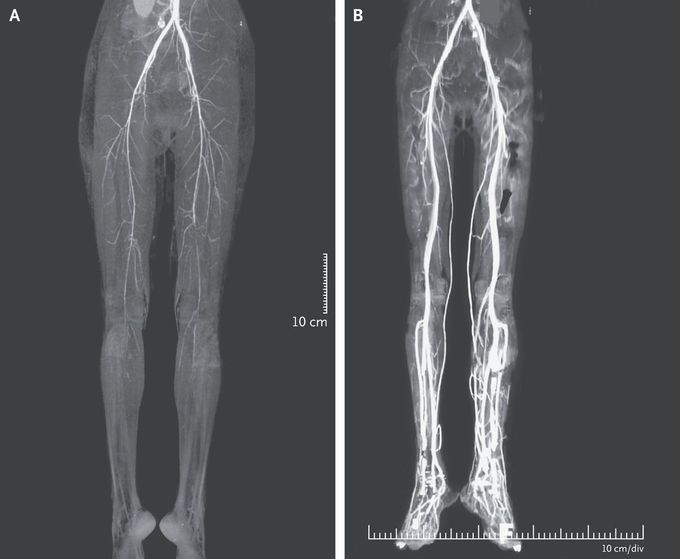


Burning Pain in the Legs
A 24-year-old woman presented to the outpatient clinic with a 2-day history of severe, burning leg pain. She had a history of congenital infection with the human immunodeficiency virus, for which she was taking tenofovir, emtricitabine, and lopinavir–ritonavir. Four days before presentation she had also started taking ergotamine twice daily for a migraine headache. The pain in the legs extended from the toes to the midthigh and was accompanied by discoloration of the feet and difficulty walking. On examination, both legs were cold, with nonpalpable popliteal and dorsalis pedis pulses. Computed tomographic (CT) angiography revealed diffuse, symmetric, luminal narrowing of the arteries below the external iliac artery in both legs (Panel A). A diagnosis of ergotism was suspected. Ritonavir inhibits the enzyme CYP3A4, leading to increased serum levels of ergotamine and thereby causing vasospastic limb ischemia. Treatment with intravenous prostaglandin and unfractionated heparin was initiated. The pain subsided, and patient’s legs became warmer, but she underwent amputation of the left second toe owing to gangrene. A repeat CT angiogram obtained 2 weeks after presentation showed improved perfusion in both legs (Panel B).

